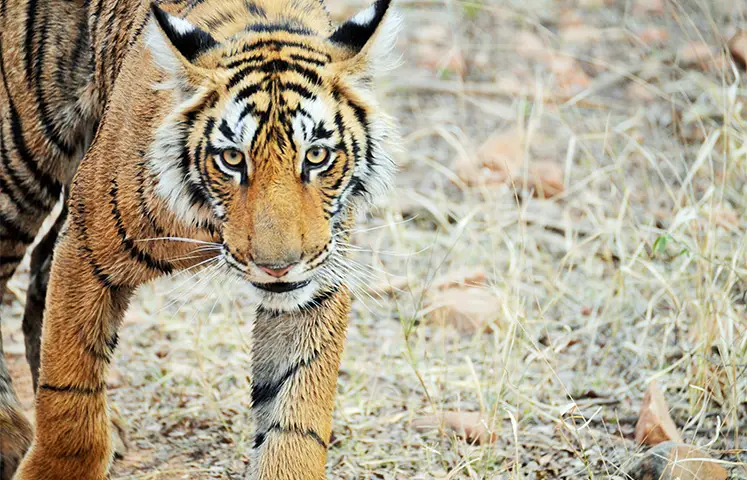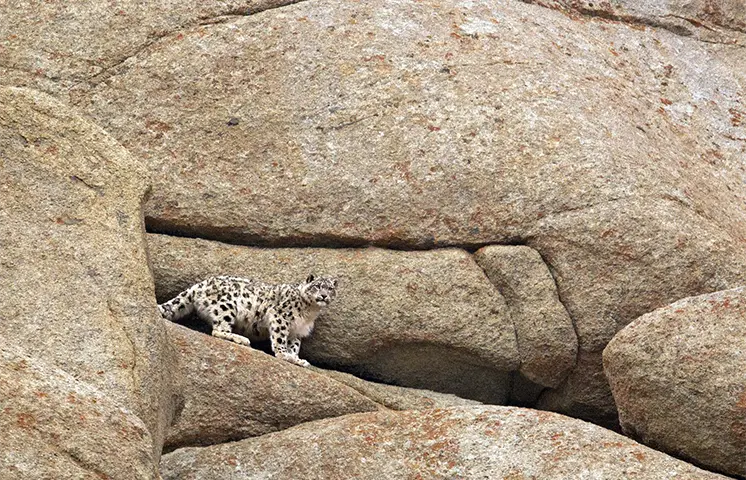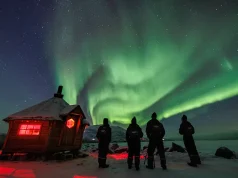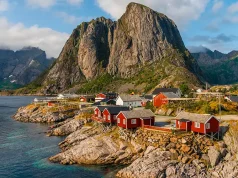
The third Friday in May is Endangered Species Day, a chance to celebrate, learn about, and take action to protect threatened and endangered species to save our planet’s biodiversity. This Global Day of Action was created and founded by David Robinson and the Endangered Species Coalition in 2006 and has continued to grow in scope and momentum since.
This year also marks the 50th anniversary of the Endangered Species Act, a landmark piece of legislation signed into law in the U.S. in 1973 that institutionalized the country’s national commitment to the conservation of fish, plants and wildlife, and the places they call home.
With the current biodiversity crisis, and an estimated one million species at risk of extinction due to several factors, including habitat loss, climate change, pollution, and poaching – it is important now more than ever to get involved.
“One of the best ways to keep the momentum going and growing on this movement to protect at-risk species is to engage as many people as possible, and travel is a great way to achieve that,” said Court Whelan, Natural Habitat Adventures’ Chief Sustainability Officer. “As we always say here at Nat Hab, you cannot save what you do not love, and you cannot love what you do not know. People need to visit, see, and learn about wildlife if they are going to advocate for a species’ survival.”
Here are 10 endangered species and where you can see them for yourself with Nat Hab, the world’s leading nature and wildlife travel company:

AFRICAN ELEPHANTS in Botswana: Strong, smart, but vulnerable, African elephants are the world’s largest land mammal, whose numbers have suffered greatly from the illegal wildlife trade, habitat loss and fragmentation, and human-elephant conflict. Botswana is home to the largest populations of these incredible creatures, with some 130,000 elephants within its borders.
- Where to see them: The 12-day Secluded Botswana Safari is Nat Hab’s flagship safari and a truly exclusive adventure into the heart of Africa’s wilderness. There are a variety of other Botswana-based itineraries that also get guests close to vast elephant herds.
ORANGUTANS in Borneo: Known for their distinctive red fur, orangutans are the largest arboreal mammals, spending most of their time in trees. Sharing almost 97 percent of our DNA, these highly intelligent creatures are unfortunately easy targets for hunters because of their large size and slow speed. They are also the victims of habitat loss as swaths of forests are cleared to make way for palm oil plantations, and timber and mining resource extraction.
- Where to see them: On Nat Hab’s 12-day The Wilds of Borneo: Orangutans & Beyond itinerary, travelers go in search of rare and threatened wildlife in the world’s oldest rain forests.

TIGERS in India: A rare bright spot in the fight to save endangered species, after a century of decline, overall wild tiger numbers are starting to grow, with populations stable or increasing in India, Nepal, Bhutan, Russia, and China. This hopeful change is the result of a strategic, long-term movement where countries have increased protections for tigers, engaged local communities as leaders and partners in conservation, restored wildlife corridors, and boosted local resources to secure a future where tigers and people can co-exist.
- Where to see them: Nat Hab offers three India trips where travelers have the opportunity to view Bengal tigers – the 12-day Grand India Wildlife Adventure, a comprehensive journey that visit three different national parks; the seven-day India Tiger Quest, a more singular, tiger-intensive itinerary through Ranthambore National Park; and the 11-day India Tiger Safari: A Photo Pro Expedition, designed for accomplished photographers in search of iconic shots.
GALÁPAGOS PENGUINS in the Galápagos Islands: The only species of penguin found north of the equator; they number fewer than 2,000 individuals in the wild today. They are threatened by pollution, bycatch, and climate change.
- Where to see them: Nat Hab offers a wide array of small-group, eight- to 10-day Galápagos cruises, including an active hiking and kayaking adventure, and a family-focused program aboard the National Geographic Islander II.

MONARCH BUTTERFLIES in Mexico: Monarchs are known by scientists as Danaus plexippus, which in Greek literally means “sleepy transformation,” a name that evokes the species’ ability to hibernate and metamorphize. Urban sprawl and agricultural expansion have had a devastating effect on monarchs, as millions of acres of milkweed (the only plant on which monarchs will lay their eggs and the only food source for baby caterpillars) have been plowed and paved, but it’s climate change that is the biggest threat, as it disrupts annual migration patterns by affecting weather conditions in both of its winter and summer breeding grounds.
- Where to see them: Nat Hab’s six-day Kingdom of the Monarchs tour offers the opportunity witness one of the world’s most astounding wildlife events in the forested Central Highlands of Mexico. On foot and horseback, guests enter remote fir forests where millions of monarchs roost and breed every winter – you get so close, and there are so many, you can hear the hum of their wings as tens of thousands take flight at once.
SEA TURTLES in Costa Rica: There are seven different species of sea turtle that call the world’s oceans home, and their existence is threatened through overharvesting and the illegal meat trade, habitat loss, bycatch in commercial fishing gear, pollution, and climate change.
- Where to see them: Look for green sea turtles in Tortuguero National Park on Nat Hab’s 10-day, all-encompassing Natural Jewels of Costa Rica nature expedition, or on its eight-day Costa Rica Wilderness Explorer, where guests have the chance to witness the release of sea turtle hatchlings on the beach.
MOUNTAIN GORILLAS in Uganda: Though just a couple of decades ago the outlook for the survival of this subspecies of eastern gorilla was bleak – due to ongoing civil unrest in the region, poaching, disease, and an encroaching human population – it has brightened in recent years due to conservation efforts.
- Where to see them: Nat Hab features two gorilla-focused adventures, both of which offer the rare opportunity to sit with families of endangered mountain gorillas. The 10-day Great Uganda Gorilla Safari features two gorilla treks through Bwindi Impenetrable National Park, and the 13-day Ultimate Gorilla Safari, Nat Hab’s premier primate trip, features four different gorilla-tracking expeditions (two each in Uganda and Rwanda). Both trips also visit endangered chimpanzees in Uganda’s Kibale Forest.
BLACK RHINOS in Namibia: Namibia is home to more than a third of Africa’s black rhino population, with the world’s largest population in Etosha National Park. This species of rhino has doubled its numbers over the past two decades from a low point of fewer than 2,500 individuals. However, with the ever-present threat of poaching, the future of black rhinos in Africa will depend largely on our ability to protect them.
- Where to see them: On Nat Hab’s 10-day Great Namibia Wildlife Safari, an exclusive fly-in adventure on the southwest edge of Africa, guests have the opportunity to search on foot for rare desert black rhinos alongside field experts from Save the Rhino Trust.

SNOW LEOPARDS in the Himalayas: Often called the “ghosts of the mountains” or “gray ghosts,” thanks to their elusive nature and incredible natural camouflage, for millennia, this magnificent big cat ruled the high-altitude regions of 12 countries across Asia – a total range that covers an area of close to 772,204 square miles. Poaching, habitat loss, declines in natural prey species, climate change, and human conflict are the main reasons snow leopards are under threat.
- Where to see them: On two Nat Hab trips in the Himalayas of far-north India, travelers can search for elusive snow leopards, with sightings increasing each season: The 10-day Land of the Snow Leopard adventure, where guests are joined by top trackers and naturalists as they explore the austere alpine heights of Ladakh, and the 12-day Snow Leopard Quest: A Photo Pro Expedition, where wildlife photographers can travel in pursuit of rare and coveted images few have a chance to attain.
BLUE WHALES in Sri Lanka: The largest animal on the planet, weighing a much as 200 tons, these behemoths of the sea sit at the very top of the food chain and have an important role in the overall health of our oceans. Like other large whales, blue whales are threatened by environmental change, including habitat loss and pollution, with climate change directly impacting krill, their major prey (blue whales eat about four tons every day).
- Where to see them: Search for them, plus other whales, on Nat Hab’s 11-day Sri Lanka Wildlife & Cultural Treasures, which includes a private boat cruise in Mirissa Harbor – along with a chance to look for endangered Sri Lankan Leopards in Yala National Park.





